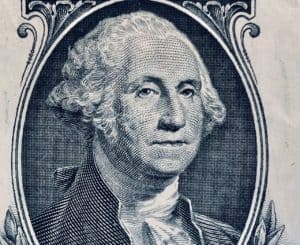 Libra, Facebook’s project to launch a global cryptocurrency, may launch as soon a January but as a stablecoin and not as a basket of assets that it originally sought to create. According to a report in the FT, Libra may launch in early 2021 as a cryptocurrency pegged to the US dollar. The report indicated that the Libra Association, a group of firms backing the crypto, anticipates launching multiple stablecoins backed by fiat currency but starting with the US dollar.
Libra, Facebook’s project to launch a global cryptocurrency, may launch as soon a January but as a stablecoin and not as a basket of assets that it originally sought to create. According to a report in the FT, Libra may launch in early 2021 as a cryptocurrency pegged to the US dollar. The report indicated that the Libra Association, a group of firms backing the crypto, anticipates launching multiple stablecoins backed by fiat currency but starting with the US dollar.
Libra was initially envisioned as a global non-sovereign currency that would incorporate a grouping of assets including fiat currency and perhaps other assets such as government bonds. But by seeking to create its own global currency regulators and elected officials around the world became concerned at the prospects of a large social media firm creating a currency that would compete against fiat currency like the dollar or euro – not to mention the potential for systemic risk. Additionally, if the crypto generated any sort of income or gains regulators may have viewed it as a security and thus regulated as one. By pursuing a stablecoin, effectively a digital payment vehicle, Libra should avoid much of the risk or concern from various regulators.
The Libra Association, the stand-alone group guiding the crypto, has been set up in Switzerland, a Fintech friendly jurisdiction, that is currently reviewing Libra’s proposal. Last April, the Swiss regulator the Financial Market Supervisory Authority (FINMA) posted the following statement regarding the review of Libra:
“FINMA confirms that it has received an application for a payment system licence under the Financial Market Infrastructure Act (FMIA) from the Libra Association (Libra) on the basis of an updated whitepaper. As is usual for new projects and start-up licences, the application is not complete in all particulars, but allows FINMA’s formal licensing process to commence. The application filed differs considerably from the project originally submitted (see link), e.g. with a view to the Libra payment system also supporting single-currency stable coins as well as the multi-currency Libra payment token. FINMA will now thoroughly analyse the application. As provided by the FMIA, it will impose extra requirements for additional services that pose increased risks. This applies in particular to bank-like risks. In addition, FINMA will give special consideration to whether strict national and international standards for payment infrastructures and also for combating money laundering can be upheld.”
Following an initial blitz of PR and ensuing commentary from global regulators – including public hearings at the US Congress, Libra has been fairly quiet building up its executive bench with high-profile professionals – some with a background at the US government. The moves have been viewed as boosting credibility inside the beltway – a relatively small group of individuals that frequently move in and out of government.
While Libra may have initially stumbled out of the gate a dollar-backed stablecoin is a safer bet as it is not unique as there are multiple competitors in this market. But while the Libra Association has been working through its regulator challenges a growing group of central banks has been reviewing the potential for central bank digital currency (CBDCs) – spurred on by Libra and perhaps undercutting the need for a private stablecoin.
Last month the European Central Bank (ECB) published a report outlining the potential for a CBDC based on the euro. The ECB stated:
“A digital euro would create synergies with private payment solutions and contribute to a more innovative, competitive, and resilient European payment system. By serving as a unifying force in Europe’s digital economies, a digital euro would also be an emblem of the ongoing process of European integration.”

